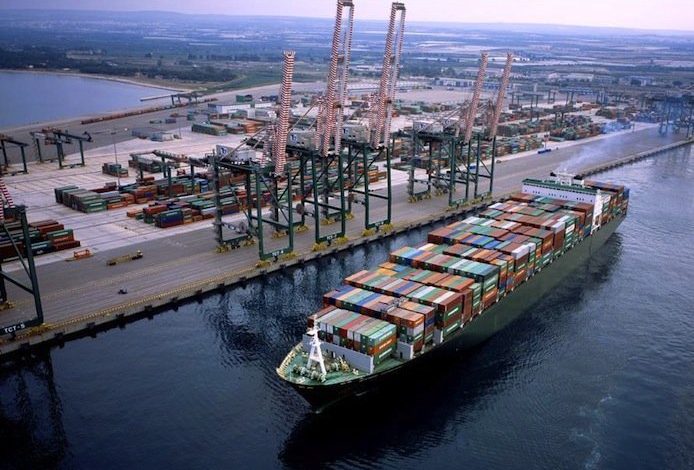Liner C02 calculators branded useless

Shippers keen to track their carbon footprint are being misled by containerlines, significant new research from Copenhagen analysts Sea-Intelligence shows.
Ten of the top 15 carriers provide an online CO2 calculator, but they have been branded “useless” in a new report from Sea-Intelligence.
“None can be validated,” Sea-Intelligence stated, adding: “They are riddled with absurdly poor data quality, sailing distances from China to New York range from 878 KM to 1.5 times around the world. One CO2 calculator has not been updated in at least 2.5 years. Avoid them all!”
According to OOCL’s CO2 calculator, moving 100 teu (dry, not reefer) from Shanghai to New York, on the service the Hong Kong liner markets as the EXC2 service, would lead to 96.84 tons of CO2 being emitted, over a sailing distance of 21,665 km.
CMA CGM, meanwhile, is able to move the 100 teu, also from Shanghai to New York, over a 9% shorter sailing distance of just 19,721 km on their Manhattan Bridge service, emitting just 56.80 tons of CO2, a massive 41.3% reduction in CO2 emissions.
“What makes this feat even more incredible (literally incredible), is that they are the exact same services! Same vessels! Same rotation! With everything exactly identical, the only difference would be the paint on the container,” Sea-Intelligence pointed out in a report amusingly headlined, ‘Colour of box saves 77% CO2’.
The research into all 10 online tools showed even greater discrepancies. COSCO, the parent company of OOCL, offers the AWE2 service, which is the exact same service, with stated CO2 emissions of just 22.36 tons, a “staggering” 76.9% reduction in CO2 emissions. The Chinese carrier also appears to have had different geography lessons to others, claiming the sailing distance from Shanghai to New York is just 878 km, roughly the same as driving from Hamburg to Paris. Another carrier believes the distance between these two financial hubs is 62,469 km, equivalent to one and half trips around the world.
The investigation is also an embarrassment to many of the world’s leading classification societies, who have certified these online calculators.
“CO2 calculators are entirely pointless: Not only are they littered with horrendously poor and outdated data – for some services the data is at least 2.5 years old – even when they are calibrated somewhat as intended, the absence of any stated calculation methodology and with no standards applied across the carriers, means that CO2 calculators would still be completely useless, even if they worked,” the Copenhagen research firm stated.
Concluding its in depth report, Sea-Intelligence noted: “We were sincerely hoping we could point to at least a single shining light in this decrepit miasma of disappointment, but we believe everyone has failed here; there are no winners.”
Commenting on the research via LinkedIn, box analyst Lars Jensen wrote: “[A]ny notion that you can compare performance across carriers should be abandoned.”
“In a simple example, it turns out that you can reduce your CO2 footprint by 77% by switching from one carrier to another – even though the container would literally move on the same vessel as both carriers are part of the same alliance,” Jensen explained.

Not massively surprised here. With no set best practice or standardized way to calculate co2 emissions, its up to the liners (the ones trying to sell us the space) to come up with whatever system they feel is right. Surely this is like expecting a car manufacturer to give us fair and accurate MPG info…. oh….